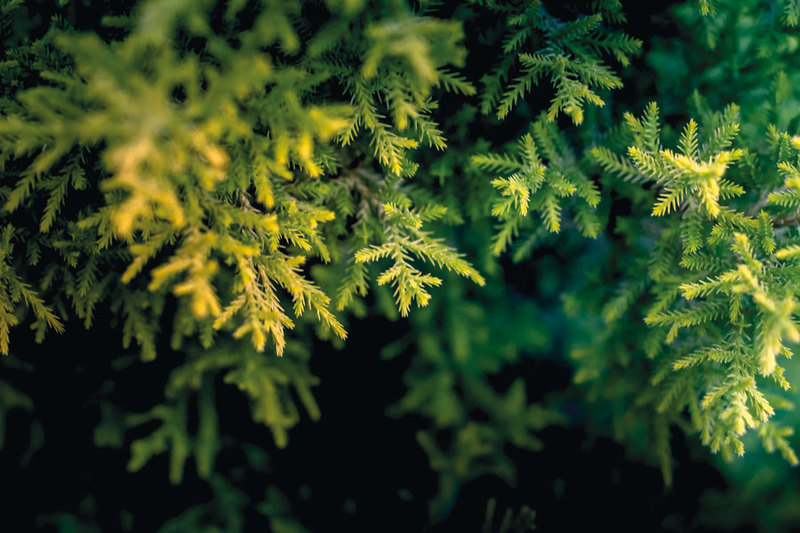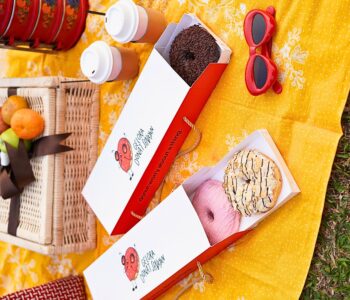It’s the season many people look forward to the whole year: celebrating Christmas means family time, holidays, scrumptious food and possibly lots of presents. On the other one hand, one shouldn’t throw all principles over board just for the sake of celebrating. On the contrary, during this season of sharing and giving, we should still keep the most important global issues in mind, among them sustainability for a better future of Mother Earth, starting from the Church to one’s own home. As the typical “White Christmas” isn’t likely to happen anytime soon in Indonesia, “Green Christmas” sounds like a viable alternative.

The central aim of the Paris Agreement – an agreement within the United Nations Framework Convention on Climate Change (UNFCCC) dealing with greenhouse gas emissions mitigation, adaptation and finance starting in the year 2020 – is to strengthen the global response to the threat of climate change by keeping a global temperature rise this century well below 2 degrees Celsius above pre-industrial levels and to pursue efforts to limit the temperature increase even further to 1.5 degrees Celsius. Additionally, the agreement aims to strengthen the ability of countries to deal with the impacts of climate change.
Indonesia has ratified the Paris Agreement as well and encourages nature conservation with a wide range of large-scale and support programmes that also include the activities of churches, mosques, temples and other places of worship. Churches in Jakarta have actively worked on a green programme, characterized by different activities ranging from planting trees, waste recycling and conceptual green celebrations to creating literature on the importance of protecting the earth – for all people.
During the holiday season, many people buy pine trees as part of the yearly Christmas celebrations. Data shows that Great Britain consumes about 8 million trees annually, while between 35 and 40 million trees are sold in the US during the Christmas season.
Christmas tree production occurs worldwide on dedicated tree farms, in artificial tree factories and from native strands of pine and fir trees. Christmas trees, pine trees and fir trees are grown on plantations in many Western nations with the goal to reduce illegal logging by distributing trees from the cultivation area.
In Jakarta, many Protestant and Catholic Churches resort to making Christmas trees from recycled goods. In Catholic churches in particular, building a recycled Christmas tree has become somewhat of an obligation for the parish, based on the recommendation from the Diocese of Jakarta (Keuskupan Jakarta). Churches in every corner of the city involve the congregation to build artificial Christmas trees by utilizing different materials such as used bottles, tins and product packaging.
Over the past three years, Gereja Katolik Santo Yoseph (the Church of Saint Joseph) has routinely made Christmas trees from recycled waste products. The secretariat of the church involves the congregation to donate used goods and waste products to the church. Since 2015, the Christmas trees in this church are made from plastic bottles and used product packaging. As one of the oldest churches in Jakarta, it also engages in tree planting activities in front of Goa Bunda Maria (Cave of the Blessed Virgin Mary).
Father Lucius Tumanggor SVD said that during the holiday season, we should celebrate togetherness, which can also be demonstrated by eco-friendly activities, such as joining hands in building the Christmas tree. Besides bringing people together, a Christmas tree made from recycled goods also nurtures creativity and can become a unique and memorable moment in the days leading up to Christmas.
“We hope that through this activity we can deliver the message that everyone plays an important part when it comes to preserving our environment,” Tumanggor said.
One of the Catholic churches frequently visited by expatriates, Santa Theresia Church ranks among the greenest churches in the city: its reforestation programme has been a routine for many years now. Activities include tree planting and waste recycling.
Yustinus, Santa Theresia’s Section Chief of Church Household, said that their environmentally-friendly programmes and activities were initiated several years ago and further intensified since early 2016.
“People are quite enthusiastic about getting involved in environmental activities, because it’s also an effective to connect with other people. Hopefully, more green projects and programmes will follow soon, such as solar panels for the churches,” Yustinus said, adding that Santa Theresia Church recently held a seminar on how to plant trees and proper waste separation. In the near future, a waste recycling seminar will be conducted to reach the ambitious goal of Indonesia Bebas Sampah 2020, a movement that aims to rid Indonesia of waste and garbage by the year 2020.
Protestant church GPIB Paulus has collaborated with the My Darling (Masyarakat Sadar Lingkungan) Trash Bank community to build an eco-friendly Christmas tree to be installed near the pulpit of the church. Approximately 20 000 plastic bottles were cut into pieces to make the Christmas tree as high as 6.5 meters.
On the other hand, Gereja Sahabat Alam (the Green Church), located in Salemba, Central Jakarta, established a cooperation with the Ministry of Environment in 2010 to further promote Reuse, Reduce, Replace and Recycle activities for sustainable and austerity programmes.
By endorsing eco-friendly and green Christmas programmes, the local churches are doing their part to raise awareness on environmental issues and sustainability. This, however, will only have a long-term effect if the congregation also begins to “act green” in their daily lives, starting in their own homes.
How to Celebrate Green Christmas at Home

- Collect household waste such as plastic and paper to build your own in-house Christmas tree. This is not only an environmentally-friendly action, but also makes for good bonding time among the family members. If this is not possible, an artificial pine tree could be another good option: due to its longevity, it can be reused for Christmas in the coming years.
- When it comes to decorating the Christmas tree, go with recycled objects or simply use last year’s decoration instead of spending a lot of money on new ones. Handcrafted objects like origami could be a fun activity for parents and children to engage in the days before Christmas.
- A Christmas tree would look boring if it wasn’t lit properly. Make sure to use energy-saving lamps to reduce the electricity to a minimum.
- Instead of buying glittery and fancy wrapping paper at the mall for your Christmas presents, use old newspapers and magazines instead. These can be further enhanced with drawings or doodles, and voila, suddenly your Christmas present looks more unique than all the others.
- Make sure your children understand what “green Christmas” is all about. Create games that relate to Christmas and eco-friendly activities and turn it into your very own Christmas tradition – something they will also look forward to in the future.






